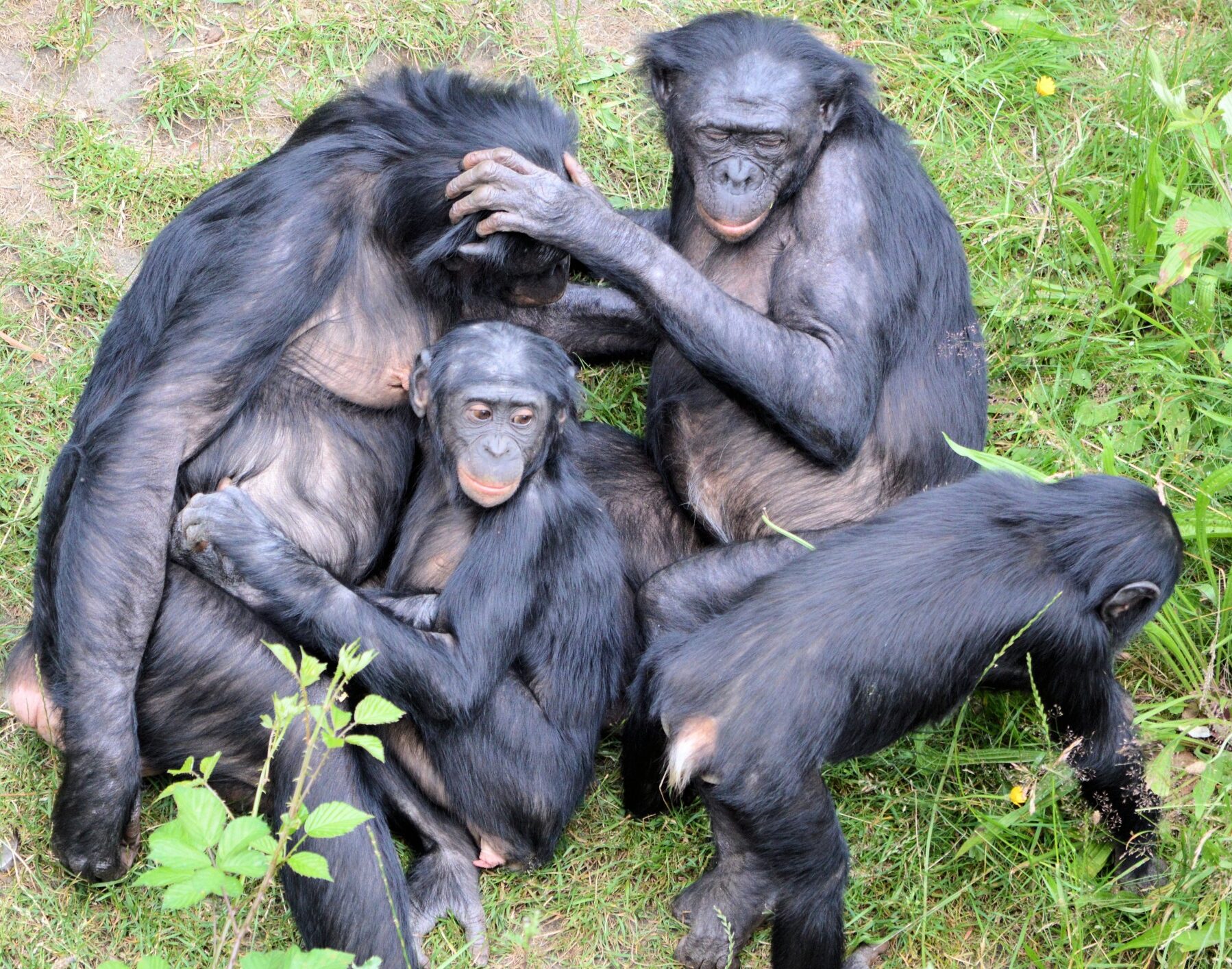How do gorillas, chimpanzees, and bonobos “talk” without words? For decades, scientists debated whether their gestures are learned tricks or instincts passed down through evolution. Now, researchers have proposed a fresh answer: apes “show” their intentions using movements borrowed from everyday actions — and this might help explain how human communication began.
The Great Ape Debate
The study compares three ideas. The Leipzig view claims apes learn gestures through repeated interactions, like a baby learning to wave “bye-bye.” The St Andrews view argues gestures are tied to genetics. But the authors reject both, proposing a “recruitment view.” They argue apes use gestures that “recruit” familiar body movements or states, like reaching for food or exposing a shoulder to ask for grooming.

“Showing” Instead of Telling
Apes don’t invent new signals. Instead, they reuse actions their bodies already know. For example:
- “Mouth stroke“: A chimpanzee sweeps its hand over another’s mouth to ask for food — mimicking how food is shared.
- “Present (climb on)“: A bonobo lifts its arm to ask for a ride, mirroring how infants climb onto their mothers.
- “Directed push“: A gentle nudge guides another ape to move, similar to how they physically reposition others.
These gestures work because apes share similar bodies and recognize common actions. A gorilla’s “arm up” gesture likely means the same to a chimpanzee, even if they’ve never met.
Why Old Theories Don’t Fit
The Leipzig view predicts that if gestures are learned, they should vary between groups, like regional slang. But studies show apes worldwide use many of the same signals. The St Andrews view assumes gestures evolved for communication, but the authors argue they’re instead recycled from non-communicative behaviors. For example, a chimpanzee or bonobo leaning over to ask for a back scratch isn’t a learned behavior. This gesture recruits a familiar social behavior (grooming) to communicate a request. And because grooming is a shared activity, the meaning is instantly clear.
Human Communication’s Roots in Ape Gestures
The study suggests human language may have grown from similar showing gestures. Here’s how:
- Shared Foundation: Both humans and apes use a “pragmatic framework” for communication, where gestures express intentions by showing actions or body states. Early humans might have pointed to objects or mimed actions before inventing words.
- From Bodies to Words: Apes’ gestures are not arbitrary — they’re tied to real-world actions. Humans likely started the same way, then evolved to use abstract symbols (like words).
- Intuitive Understanding: Humans can guess ape gestures (like begging) without training, hinting at shared cognitive roots.
The Bigger Picture
This “recruitment view” could reshape how we understand animal and human communication. The authors write that ape gestures reveal a “continuous” link to human language, rooted in our ability to infer intentions through context.
In short, every time a chimpanzee reaches out its hand to ask for food, it’s using a primal form of communication that might just be the foundation of human language.
***
“The origin of great ape gestural forms.” Graham et al. Biological Reviews (2024).








